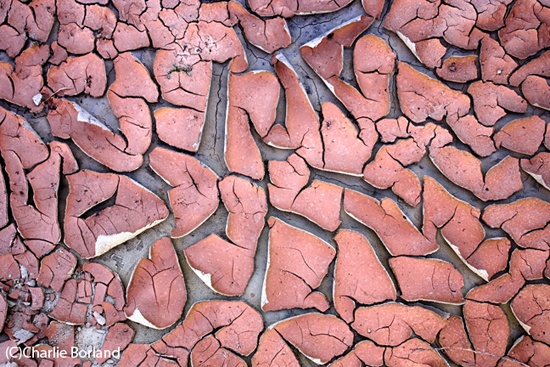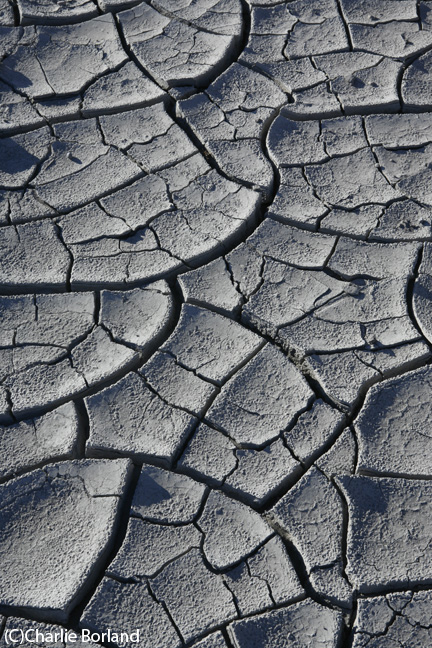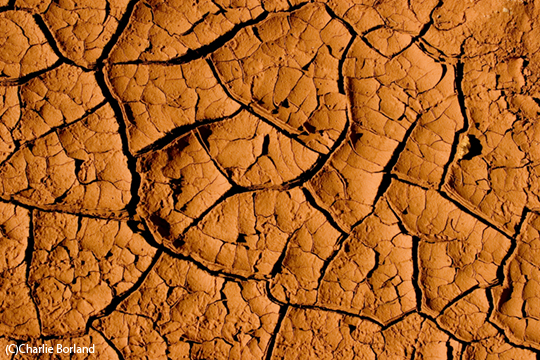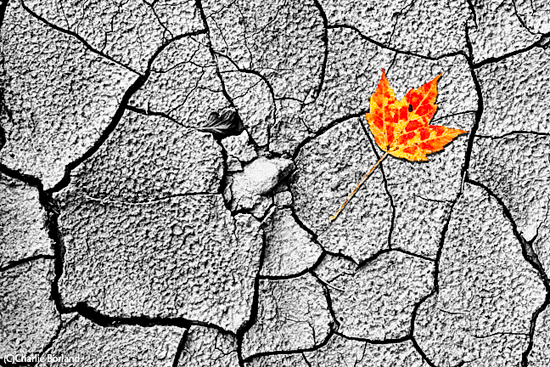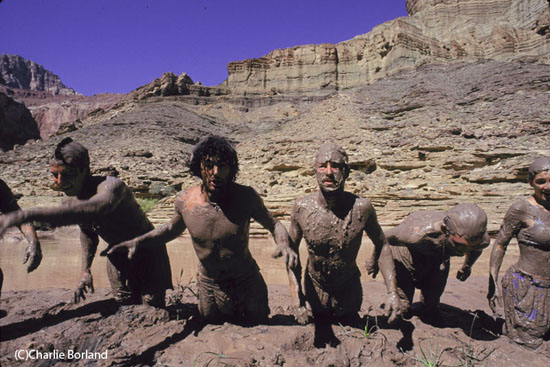There is so much in nature to photograph! National Parks, wild areas, and even our own backyards! We have an infinite amount of subjects to capture and in amazing ways.
But it is not necessarily where we photograph as it is what we photograph that makes for a pleasing image which results in images that please us. These might be subjects we discover or others we pursue that are subjects close to out hearts. And one of my favorites can be found just about anywhere.
I am here to admit: I love mud! And I love photographing it. Cracked mud in particular!
Everywhere I go, if I see mud, and especially cracked mud, I immediately stop and look for a place with NO mud to set down my camera pack and get to work.
Let’s face it; mud is all around us! From alpine settings to a rain forest, a drought stricken desert or a city park, there is a good chance there is mud of some sort. All mud is not the same either since it depends on the makeup of the content. I have seen red mud, green mud, brown mud, and probably more colors as I have wandered around the Southwest.
I usually don’t set out in search of mud rather I discover it while wandering around with the camera in search of more ‘traditionally beautiful’ subjects.
Now, as we all know, beauty is in the eye of the beholder. And as a ‘beholder’ myself, I am here to tell you mud is beautiful. If you don’t agree, then why do some woman smear it on their face to make themselves BEAUTIFUL? Why do some craft beautiful pottery from mud? ,In many communities you can find a jacked-up 4×4 vehicle caked in mud and usually, although not always, operated by a young testosterone driven male strutting around like it’s a badge of honor and swearing to never wash it. In a few cases however, the vehicles do look better caked in mud than without. Like flowers in bloom, free flowing rivers, and wandering wildlife, mud has a place in nature. Much of the rock formations we walk across may have been mud in some form. We use it for beauty products, smooth it across sheetrock, and slap it on some stucco homes. So why not photograph it?
Mud can tell a story like these grizzly tracks along a muddy river bank. Fortunately, photographing mud does not require a ton of equipment or any sophisticated techniques. All you need is this:
1 – A camera and lens
2 – A tripod is useful but not mandatory
3 – Solid boots on your feet in case, god forbid, you stepped in the stuff
4 – A plastic garbage bag so you have something to lay your camera bag on (or yourself). This can act as a rain cover in emergencies.
The Art, Like any subject, you want to compose your image to create interest with the shapes and lines of the mud.
Fortunately, mud is often a one dimensional subject easily photographed looking straight down so composing the image might be a matter of simply rotating the camera left and right.
When setting up shots like this, you can use a moderate aperture like f/8 and hand hold the camera provided you have the light that provides a fast shutter speed. I find these ideal shooting conditions for mud since I try to avoid using my tripod and…well, getting mud on the legs.
On occasion you need to get down to a lower angle to emphasize the mud in a near-far wide angle composition. This is one reason I prefer cracked mud: it’s often dry and you don’t run the risk of getting muddy. Either way, the low angle often presents a better angle for a strong image.
If you struggle with the idea of finding any beauty whatsoever in photographing mud, feel free to create the fake shot of a fall color leaf lying in the mud, a simple step to beautify what you might consider; ugly mud. If there are no beautiful fall leaves available, then take it further and add one in Photoshop like I did here.
On the other hand if you find mud as exciting and appealing as I do, consider a rafting trip like the Colorado River through the Grand Canyon where you will find some wonderful mud pits that you can jump right into. You can wallow all day if you wish, but be advised: doing so will suck every ounce of moisture from your skin so you will want lotion and a lot of water to drink.
Photographing mud is nature photography and even though it is less ‘beautiful’ than other nature subjects, it has its own unique beauty. So go forth with your camera and new vigor and capture some great mud images, but be sure and avoid…getting muddy.
– Charlie Borland / BPSOP Instructor
Charlie is teaching:

